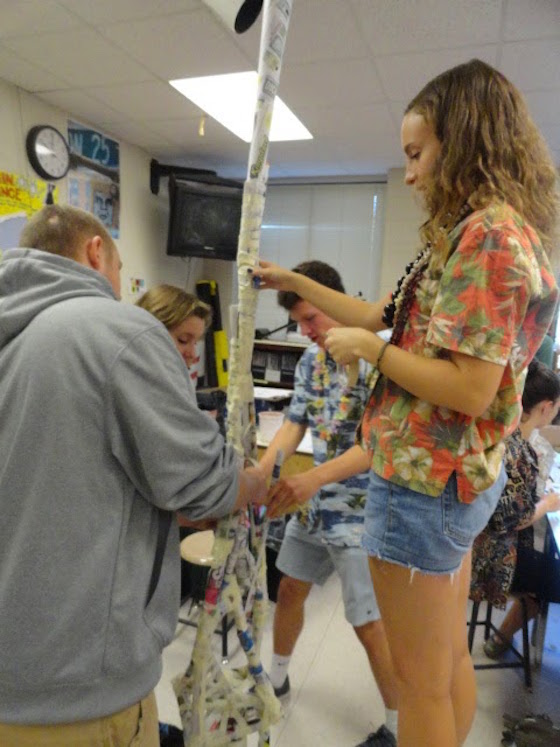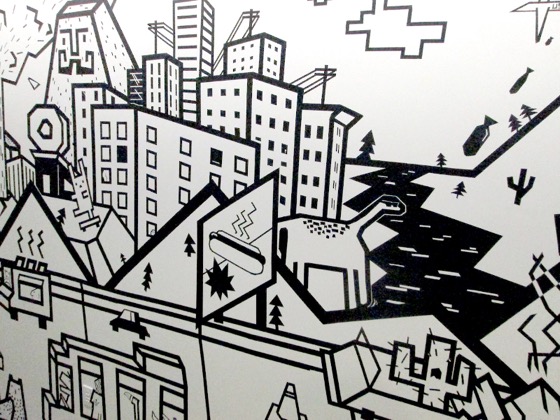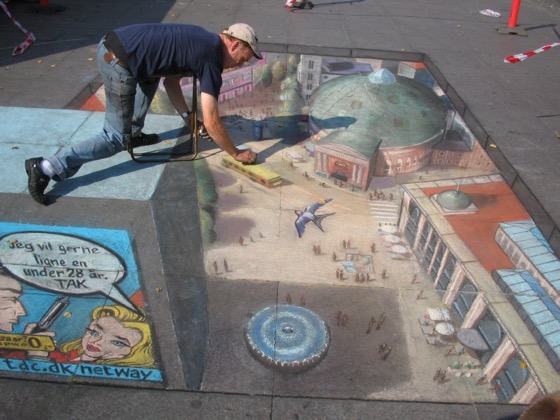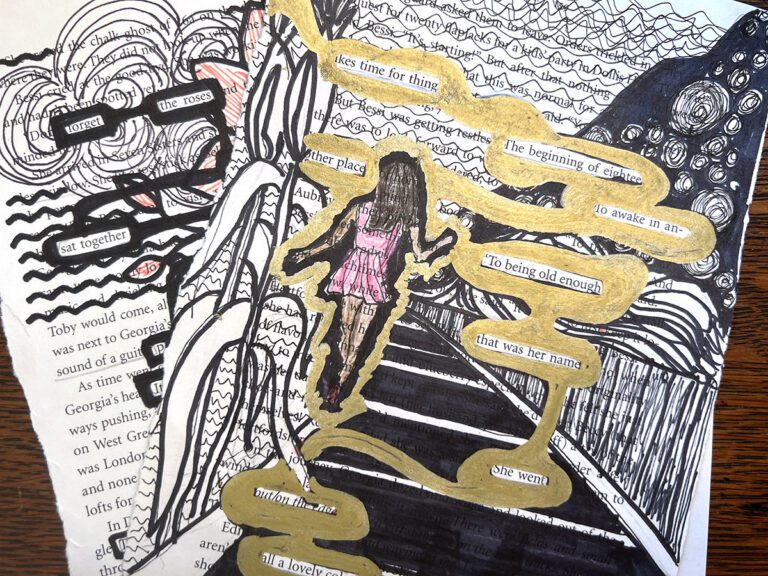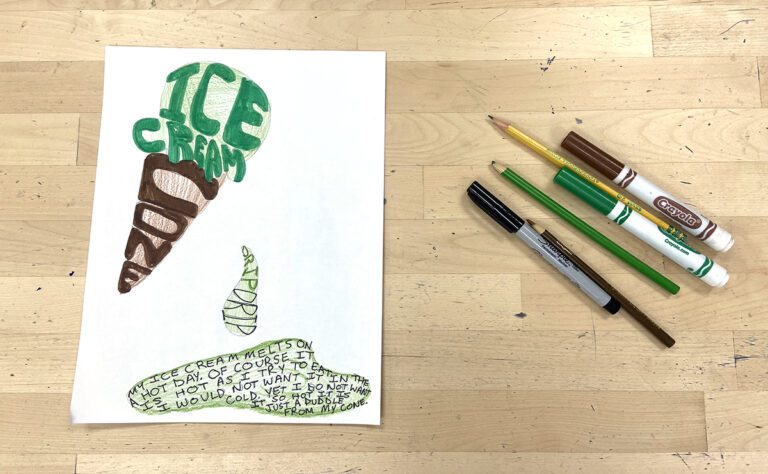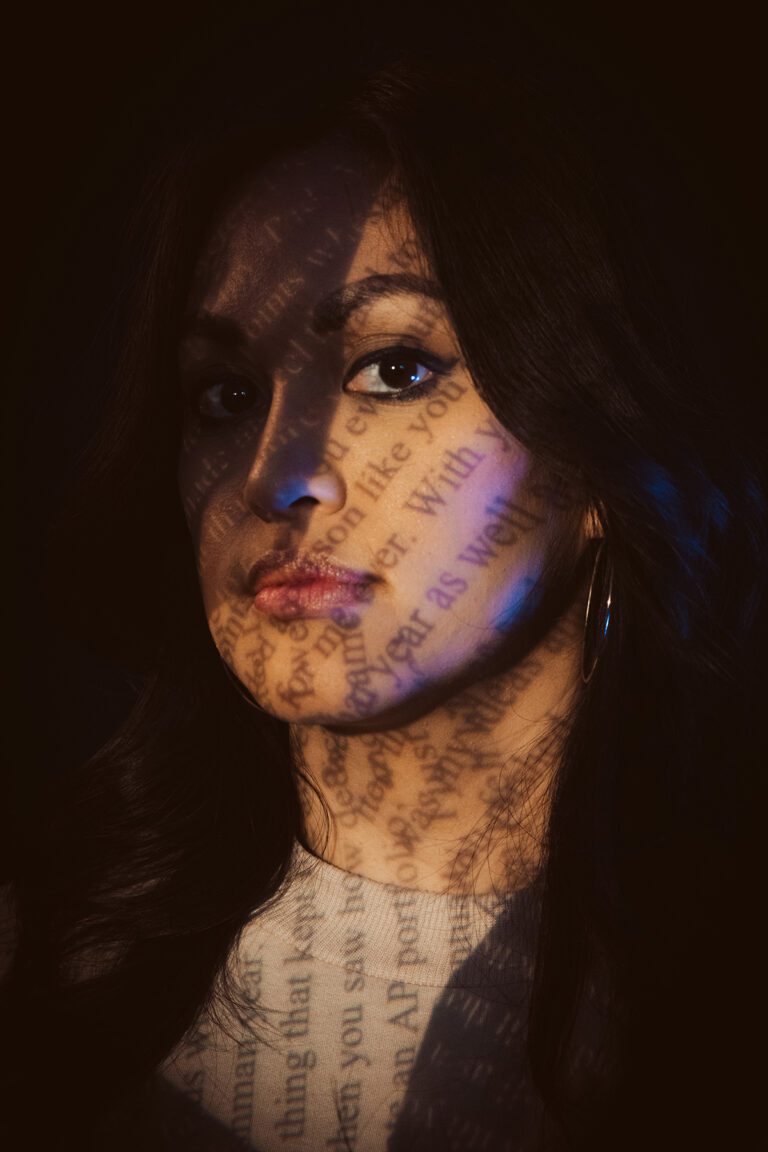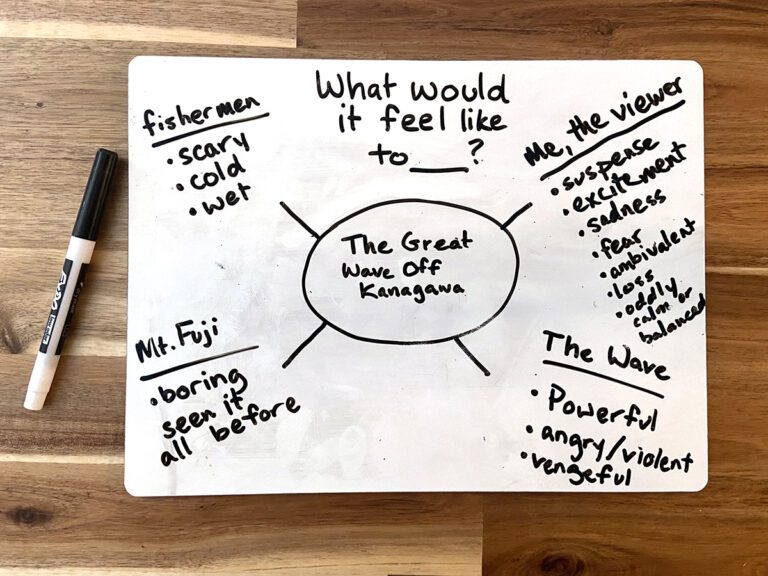Incorporating architecture into your curriculum has been on your to-do list since the start of the school year. Structure and perspective are vocabulary words you want your students to understand but you’re dreading the thought of dragging out the rulers for another two point lesson in pencil. Fret no more because today we will share our top 5 Ways to Teach Architecture Without Linear Perspective!
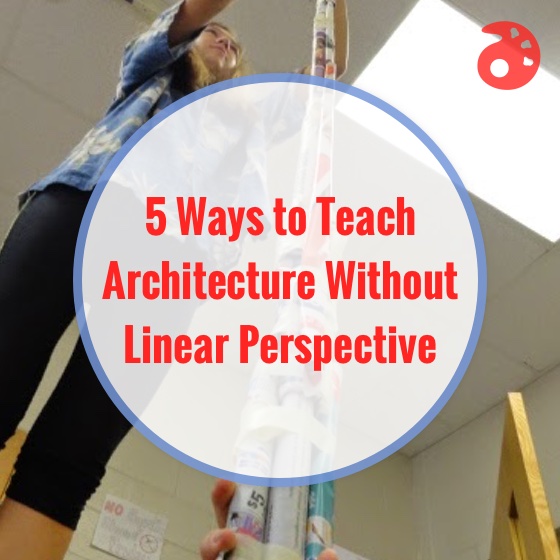
1. Spray Paint
Take a walk down a city block in Manhattan and you are bound to come across a spray paint artist. No, I’m not talking about graffiti artists who spray and run. Instead, these talented artists use cardboard as stencils and create incredible skyline images in only a few minutes. Crowds gather round and ooh and ahh as an image appears literally before their eyes. A quick Google search for Spray Paint Art NYC will result in several short videos that could easily be emulated by a determined high school student with a few cans of spray paint.
2. Newspaper Towers
This is a fun, one day lesson that can easily be incorporated into a unit on architecture. It’s called the Newspaper Tower Challenge. Students are placed in groups of 4-6. Each team receives a stack of newspapers and a roll of masking tape. The rules are simple. Teams are to create a free standing tower using only the materials provided. Tape pieces can be no longer than 6 inches and may only be taped to newspaper. The teams are given 45 minutes to complete their towers. The tallest free standing tower at the end of the 45 minutes wins. Candy makes a nice prize.
For other newspaper related structures, check out Tim’s article, Six Inexpensive Sculpture Ideas to Start the Year.
3. Light Drawing
Drawing with light creates an entirely new dimension to making art. Not only can you not see the tool you are drawing with or the material you are drawing on, they frankly don’t even exist. The artist waves a glow stick in the direction of the camera in hopes that the desired image will be captured. It’s harder than it looks to get it right, but if the student is up for the challenge, the reward can be equally gratifying. Variations of the more classic light drawings may include stencils that can be layered for an even more impressive look. For tips and tricks on drawing with light, check out this AOE lesson plan titled Light Graffiti.
4. Tape Murals
Considering the usual size and scope, creating a mural can be a daunting task. An obvious challenge to those wishing to create a mural is dealing with getting permission for something that will surely be permanent. Masking tape murals offer an alternative that is not only non-permanent, the geometrical line quality lends itself perfectly to perspective type projects. Skylines, one point perspective drawings and buildings full of windows can all be used as inspiration. To get started, consider this AOE lesson plan titled Creating Tape Murals.
5. Other Perspectives
Maybe, when it is all said and done, you are still hung up on the idea of perspective. The idea of linear perspective doesn’t send chills down your spine, but what else can you do? Well, before you settle in for a week-long boring unit, you might consider a few alternative perspective projects. Street artist Julian Beever is a master at anamorphosis. He uses pastels to create the illusion of three dimensions on the sidewalk. James Hopkins and Felice Varini incorporate the concept of localized perspective in their work. Everything looks perfect but only from one angle. For a fresh perspective and example of works by all three of these artists, check out New Ideas in Art: Perspective.
These non-traditional ideas will surely spark your students’ interest in architecture!
{image source}{image source}{image source}{image source}
Tell us, how do you teach architecture in your room?
What other interesting ways can you think of to bring architecture into the classroom?
Magazine articles and podcasts are opinions of professional education contributors and do not necessarily represent the position of the Art of Education University (AOEU) or its academic offerings. Contributors use terms in the way they are most often talked about in the scope of their educational experiences.

